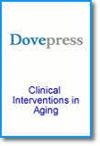Low HALP (Hemoglobin, Albumin, Lymphocyte, and Platelet) Score Increases the Risk of Post-Stroke Cognitive Impairment: A Multicenter Cohort Study
IF 3.7
3区 医学
引用次数: 0
Abstract
Objective: The HALP (hemoglobin, albumin, lymphocyte, and platelet) score is a novel indicator that measures systemic inflammation and nutritional status that has not been correlated with the risk of post-stroke cognitive impairment in patients with acute ischemic stroke or transient ischemic attack (TIA).Methods: Study participants were recruited from 40 stroke centers in China. The HALP score was derived using a weighted sum of hemoglobin, albumin, lymphocytes and platelets, and study participants were categorized into 4 groups of equal sizes based on quartiles cutoffs of the HALP score. The Montreal Cognitive Assessment (MoCA)-Beijing Cognitive Assessment Scale (MoCA-Beijing) was performed at 2 weeks and 12 months following stroke onset. Post-stroke cognitive impairment was considered in patients with MoCA-Beijing≤ 22. Multiple logistic regression methods were employed to evaluate the relationship between the HALP score and the subsequent risk of developing post-stroke cognitive impairment.
Results: The study population comprised 1022 patients (mean age 61.6± 11.0 years, 73% men). The proportion of individuals with MoCA-Beijing≤ 22 at 2 weeks was 49.2% and 32.4% at one year. Patients in the lowest quartile of HALP score (< 36.56) were observed to harbor the highest risk of post-stroke cognitive impairment at 12 months post-stroke/TIA compared to those in the highest quartile (odds ratio=1.59, 95% CI=1.07– 2.37, p=0.022), and lower domain scores for executive function, naming, and attention. There were no statistically significant differences between patients in the different quartiles of HALP score and HALP score at 2 weeks post-stroke/TIA.
Conclusion: The HALP score is a simple score that could stratify the risk of post-stroke cognitive impairment in stroke/TIA patients to facilitate early diagnosis and interventions.
Keywords: mild stroke, post stroke cognitive impairment, hemoglobin, albumin, lymphocyte, platelet
HALP(血红蛋白、白蛋白、淋巴细胞和血小板)评分低会增加卒中后认知障碍的风险:一项多中心队列研究
目的:HALP(血红蛋白、白蛋白、淋巴细胞和血小板)评分是衡量急性缺血性脑卒中或短暂性脑缺血发作(TIA)患者全身炎症和营养状况的一项新指标,但该指标与卒中后认知障碍的风险并无相关性:研究对象来自中国 40 个卒中中心。根据血红蛋白、白蛋白、淋巴细胞和血小板的加权总和得出 HALP 分值,并根据 HALP 分值的四分位临界值将研究参与者分为 4 组,每组人数相等。在中风发生后 2 周和 12 个月分别进行蒙特利尔认知评估(MoCA)-北京认知评估量表(MoCA-Beijing Cognitive Assessment Scale)。MoCA-Beijing≤22的患者被视为卒中后认知障碍。研究采用多元逻辑回归法评估 HALP 评分与卒中后认知障碍发生风险之间的关系:研究对象包括 1022 名患者(平均年龄为 61.6±11.0 岁,73% 为男性)。2周后MoCA-Beijing≤22的患者比例为49.2%,1年后为32.4%。与最高四分位数的患者相比,HALP最低四分位数(< 36.56)的患者在卒中/TIA后12个月出现卒中后认知障碍的风险最高(几率比=1.59,95% CI=1.07-2.37,p=0.022),且执行功能、命名和注意力的领域得分较低。不同四分位数的患者在 HALP 评分和脑卒中/脑梗死后 2 周的 HALP 评分之间没有明显的统计学差异:HALP 评分是一种简单的评分方法,可对卒中/TIA 患者卒中后认知功能障碍的风险进行分层,以促进早期诊断和干预。
本文章由计算机程序翻译,如有差异,请以英文原文为准。
求助全文
约1分钟内获得全文
求助全文
来源期刊

Clinical Interventions in Aging
GERIATRICS & GERONTOLOGY-
CiteScore
6.20
自引率
2.80%
发文量
193
期刊介绍:
Clinical Interventions in Aging, is an online, peer reviewed, open access journal focusing on concise rapid reporting of original research and reviews in aging. Special attention will be given to papers reporting on actual or potential clinical applications leading to improved prevention or treatment of disease or a greater understanding of pathological processes that result from maladaptive changes in the body associated with aging. This journal is directed at a wide array of scientists, engineers, pharmacists, pharmacologists and clinical specialists wishing to maintain an up to date knowledge of this exciting and emerging field.
 求助内容:
求助内容: 应助结果提醒方式:
应助结果提醒方式:


